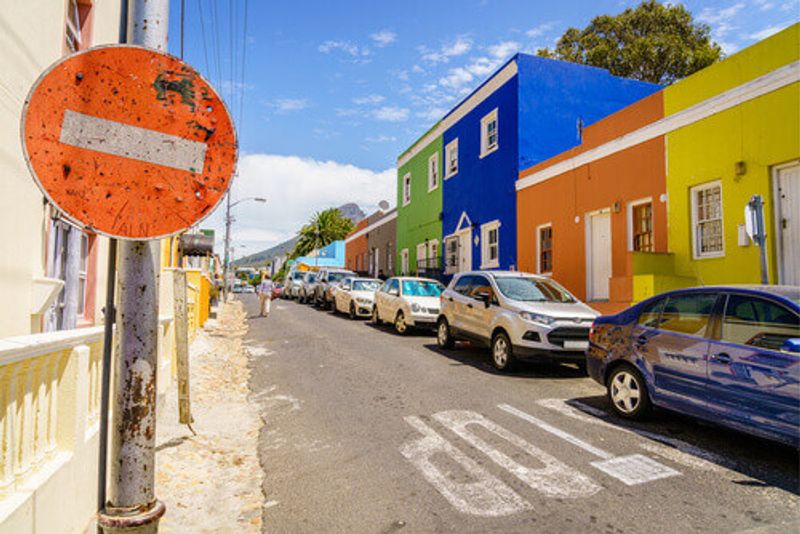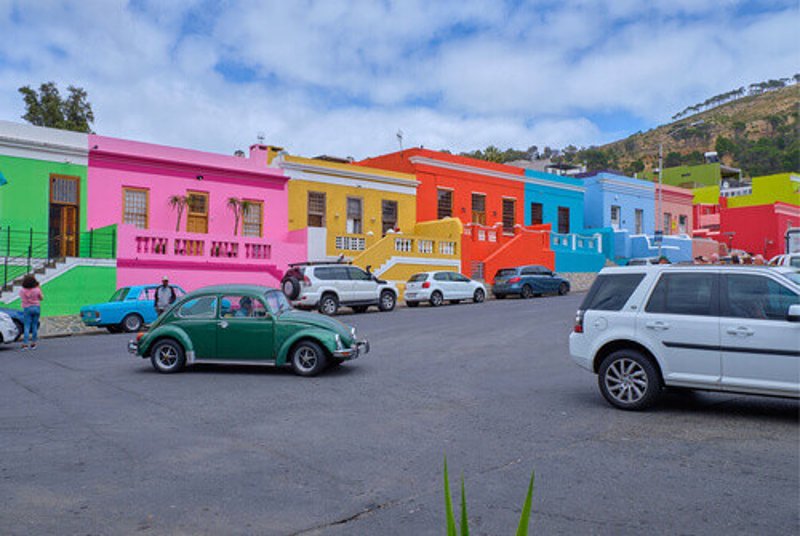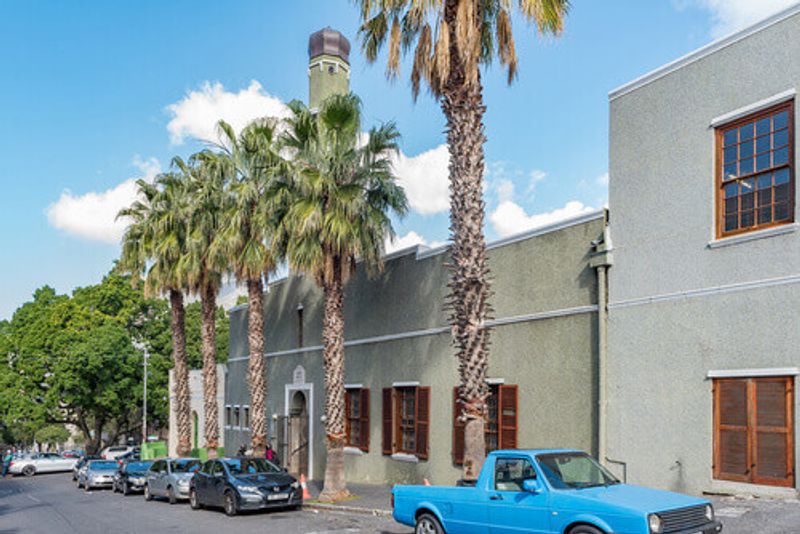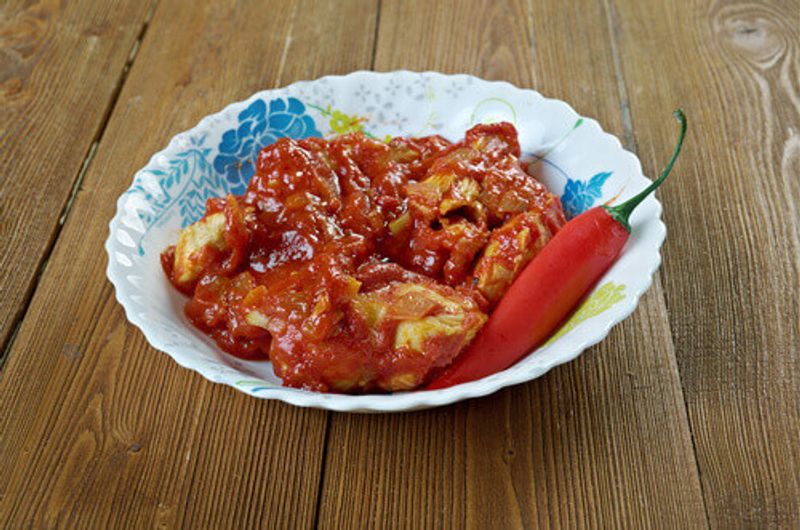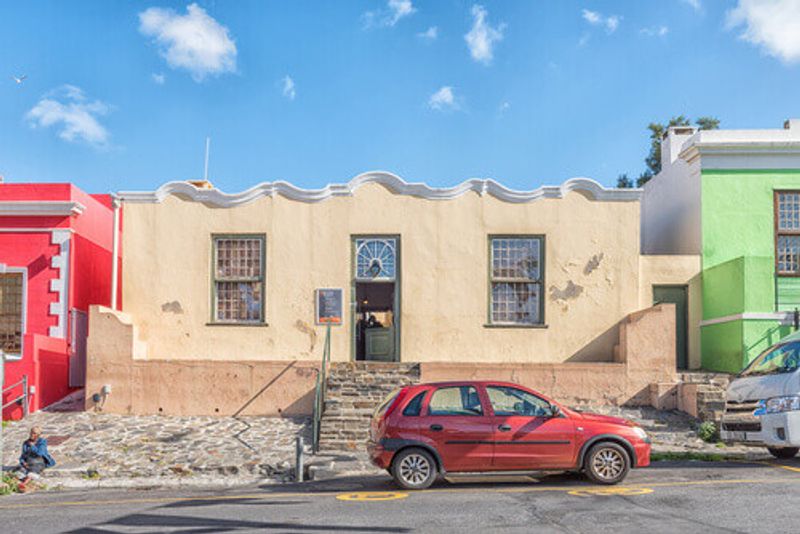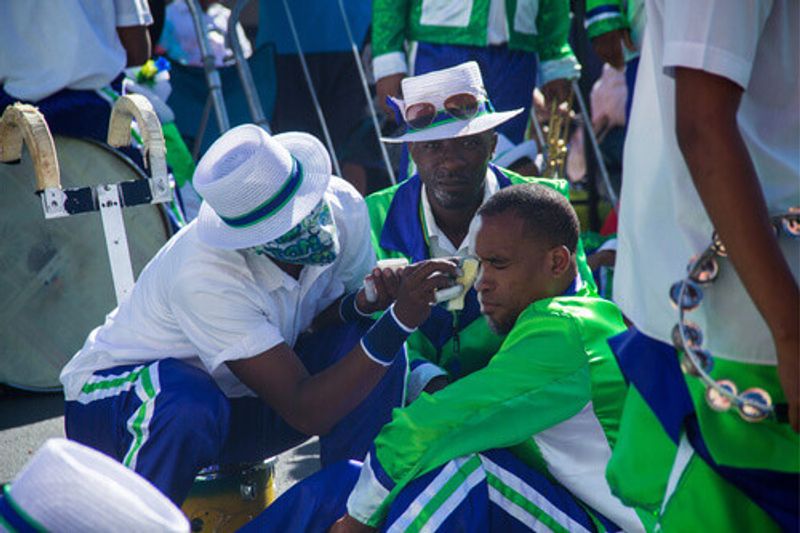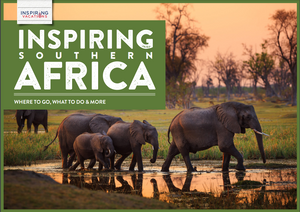Take a stroll through Cape Town’s Bo-Kaap district and experience the wonderful cultural melting pot that defines the city
The first thing you’ll notice about Bo-Kaap is that this historic Cape Town district on the edge of the CBD is a riot of colour. Wander up or down any of its hilly cobbled streets and you’ll find rows of houses painted in bright pinks, electric blues, sunny yellows, lime greens: the palette is as bright as a rainbow and just as cheerful.
No-one is entirely sure why this distinctive area of Cape Town is so colourful but some suggest that at the end of apartheid, when the local council offered tenants the opportunity to buy their homes, they celebrated their new homeowner status by painting the exteriors of the (then) white houses in bright colours. Others suggest the colours came down to limited paint choices and a desire to stand out from their neighbours. Whatever the reason, the idea caught on and now very few homes in the district have escaped a rainbow makeover.
Many of these buildings, including distinctive British, Cape Georgian and Cape Dutch architecture, were originally designed to house the slaves brought to South Africa from Malaysia, India, Sri Lanka and other parts of Africa. Over time the people who lived there became known as Cape Malays, even if they had no connection to Malaysia. Many of these slaves, and later settlers, were muslim and the district is still home to a significant muslim community. The location of ten mosques including the Auwal Mosque - the first mosque to be established in South Africa - the call to prayer is a familiar and evocative sound as you walk through the Bo-Kaap’s streets and laneways.
The area is also associated with the distinctive and beloved Cape Malay cuisine. Characterised by the liberal use of spices, it traces its roots back to the recipes brought by the melting pot of slaves and settlers to the Cape. Browse the local grocery stores for an insight into the key ingredients used in the cuisine and head to the heritage food and craft market (at the Schotschekloof Civic Centre, first Saturday of every month). There are several restaurants in Bo-Kaap featuring Cape Malay cuisine - think spicy curries, sosaties (kebabs) and bredie (stew) – where you can experience the dishes that expertly merge South African, Malay and East African flavours.
Take a step back in time in the Bo-Kaap Museum, housed in Bo-Kaap’s oldest building. Wander through the rooms of this former home and see the way life was lived for a typical Cape Malay family in the 19th century or join one of the many Bo-Kaap guided walking tours and discover the area’s history and stories as you walk.
As well as its rainbow hued streets, Bo-Kaap’s colourful past and present is celebrated with a calendar of festivals throughout the year. The annual Kaapse Klopse/Cape Minstrels festival, a parade and street party that has its origins in a celebration created by the original slave communities, features brightly costumed dancers, musicians and marchers. If you’re in Cape Town in January, it’s one party you won’t want to miss.
